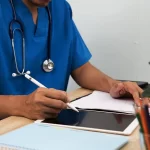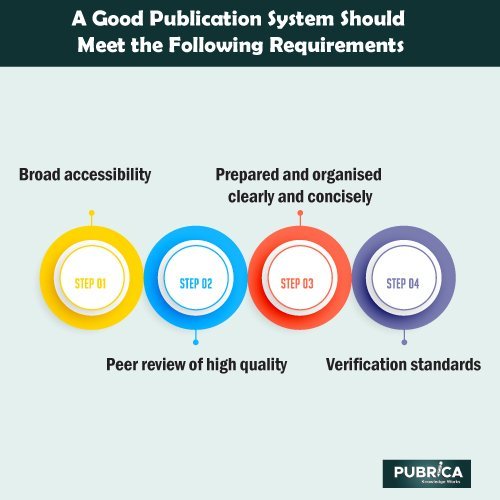
Grant writing for creative medical research: Time to reconsider
January 25, 2022
Guide to Writing Case Reports for Medical Journals
February 2, 2022In brief
The Internet quickly changes how academic research findings are shared within groups and with the general public. The European Commission has suggested a proposal to alter the way academic research journal is published, with assistance from a group of high-profile donors, to expedite change and make the findings of research quickly and freely available online for anyone to read and use Here, to explore the plan’s anticipated influence on the publishing environment, as well as its potential advantages and unexpected consequences. It’s tough to be published in significant publications. But, it’s also really satisfying. Successful authors understand that the publication process may be a lengthy, challenging, and sometimes unsafe journey (1). The first — and most crucial — stage in the trip is imagination, which entails generating an exciting research topic that, if answered correctly, will have an impact on how we think and act.
Introduction
Publish or perish?
In the life of an academic, journal publishing is critical. It hurts if someone else publishes comparable work earlier or in a “high impact publication” with a larger readership. Such occurrences can influence whether or not an academic gets employed and whether or not their study is supported. Publishing is essential because academics put their research to the test and share the results with peers and the general public. The primary output of most sponsored research is peer-reviewed publications and their related data. They are a significant source of trustworthy public information utilised to develop technology and guide future funding and policy choices. In today’s society, information is a valuable commodity (2).

The problems with publishing
A good publication system should meet the following requirements:
- Broad accessibility: Papers from the past and present should be available for as large an audience as possible to quickly read and apply their results.
- Peer review of high quality: Papers should be edited and evaluated objectively by relevant specialists in the area to validate and improve the quality of published work.
- Papers should be prepared and organised clearly and concisely.
- Verification standards: There should be checks for plagiarism and requirements to rectify the record if mistakes are discovered (e.g., retractions and corrections) (3).
Evolution or revolution?
There are several reasons to request to see significant changes in how academic publication operates. The Internet has opened up a slide of new possibilities and problems. Many journals now enable articles to be viewed for free at the time of publication in exchange for an open access fee to cover the expenses of online journal publication without a subscription. Furthermore, most journals enable authors to upload an electronic version of their article before peer review or prepublication, making the work available to the public, prompting some to imagine a future in which publications are changed and evaluated after being made public. There have been some movements toward journals having a more open review process, where the reviews and the names of reviewers are made available. Journals such as PLoS ONE have emerged with low standards for potential field impact, which can only be fully assessed retrospectively in any event. Communities attempt to promote, critique, and evaluate critical articles in their fields, regardless of where they were uploaded or published (e.g., F1000 and Pre-lights). As a result, the nature of science communication is rapidly evolving.
Plan S was drafted by the European Commission and pushed by several major European research funders. The strategy emphasises broad accessibility, based on the belief that individuals have a moral right to “free access to all scientific papers from publicly financed research.” It aims to accelerate the alteration of the academic publishing market by imposing rules that limit the types of journals in which authors can publish: “After 1 January 2020, scientific publications on the results of research funded by public contributions provided by national and European research councils and funding groups must be published in compliant Open Access journals or on compliant Open Access platforms.”(4)
Evolution
Over many years, the present publication system has evolved. It is far from ideal, yet science has flourished under this system. With the introduction of the Internet, the rate of change has accelerated considerably. As a result, open access publication of peer-reviewed papers (and publicly accessible posts) currently accounts for a substantial portion of the sector and is expanding. Most academic journals enable authors to self-archive their work on a publically accessible webpage. The system is evolving.
In graceful of these developments, while we agree with Plan S’s goal of increasing access to published work, we believe that rushing to implement change, which will begin in about six months, without considering the possible negative consequences, is irresponsible. Moreover, plan S has the potential to cause unneeded conflict and confusion in a community that, in the post-truth age, stands out as a haven where shared ideals and agreed-upon norms of transparency and objectivity have allowed steady growth on solid foundations(5).
Conclusion
To conclude, now that Plan S has gotten everyone’s attention, let’s make use of the momentum to revisit the present system’s flaws and implore everyone’s opinion (academics, donors, the general public, and publishers) on how to improve it. Everyone agrees that greater accessibility is beneficial, and however, it should be the goal to achieve it by evolution rather than revolution.
About Pubrica
Pubrica meets summit standards and protocols of journal publishing ethics in every single phase of services and processes. Pubrica adheres to authorship guidelines drafted by the International Council of Medical Journal Editors (ICJME), and the scope for services will be routinely updated as per the Committee of Publication Ethics (COPE) and International Society of Medical Publication Professionals guidelines (ISMPP).
References
- Fawcett, Stanley E., et al. “A trail guide to publishing success: tips on writing influential conceptual, qualitative, and survey research.” (2014): 1-16.
- A proposal for the future of scientific publishing in the life sciences.Stern BM, O’Shea EK PLoS Biol. 2019 Feb; 17(2):e3000116.
- Accelerating the transition to full and immediate Open Access to scientific publications 2018.
- Baum, Buzz, and Enrico Coen. “Evolution or revolution? Changing the way science is published and communicated.” PLoS biology 17.6 (2019): e3000272.
- Olivier Pourret; Global Flow of Scholarly Publishing And Open Access. Elements 2020;; 16 (1): 6–7.
